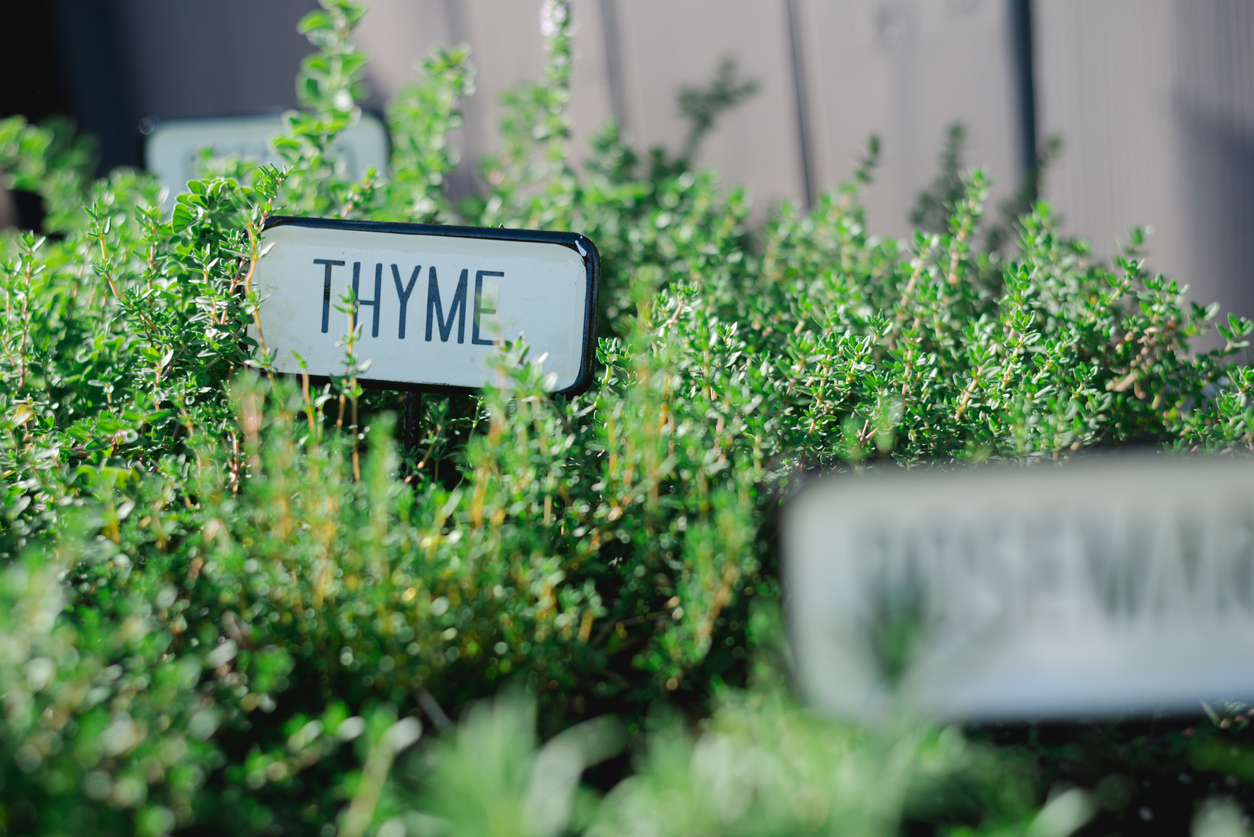From ancient Egypt to Victorian-era hospitals to kitchens in some of today’s finest restaurants, the woody, slightly spicy scent of thyme is there. This member of the mint family adds a subtle yet complex flavor to a multitude of cuisines, and the herb has numerous health benefits. And once you discover how to keep thyme alive, you’ll have all the thyme you want for any dish.
Thyme isn’t just for the kitchen, though. There are some 300 varieties of thyme, both culinary and ornamental. As an ornamental, the fragrant groundcover adds interest to gardens and pathways, and many varieties can withstand some light foot traffic, too.
Then there are varieties that are both ornamental and culinary, such as Lavender, Caraway, and Lemon Thyme. In fact, Lemon Thyme can help ward off mosquitos and even deer, leaving you and your garden free to enjoy the fresh air on a gorgeous evening.
And if that’s not enough, thyme offers plenty of health benefits. For example, thyme oil, even at low concentrations, shows potential as a natural food preservative against several common foodborne bacteria that cause human illness. And thyme’s anti-fungal properties have shown to be beneficial in treating common skin problems.

Thyme in a well-kept herb garden
How to keep thyme alive in your garden so you can enjoy it year after year
If you’re wondering how to keep thyme alive, you’ll be happy to discover that this perennial herb is pretty darn hardy. Even so, you can help it along by providing the right growing conditions and choosing the right plants for your region. Here are some helpful ideas.
Choose the right variety for your growing zone. For example, Lavender thyme grows well in zones 5 to 11, while French thyme is hardy in zones 4 to 9.
1. Start it off right. You can grow thyme from seeds, but the long germination time, from 14 to 28 days, means thyme is best started indoors where you can control the environment. But, if you want a well-established crop the first year, potted plants from your local nursery are the way to go.
2. Plant thyme in a good place. One secret in how to keep thyme alive and happy is choosing the right place to plant it. If you have a large outside plot of land with suitable soil and the right conditions for watering and draining, you might have the ideal situation for planting your thyme. If, however, your soil has too much clay or gets soggy, you might want to consider planting in raised beds or containers.
3. Contain(er) your thyme. Thyme makes an excellent container plant, whether you choose an upright variety to plant in a pot on the patio or a slow-growing creeper to spill over the edge of a window box.
4. Check the soil. Due to its Mediterranean origins, thyme thrives on dry, sandy—even rocky—soil. Many gardeners believe thyme actually benefits from poor soil and a lack of water.
5. Time your thyme. If you’re starting your plants indoors from seeds, begin in late February to early April. Thyme seeds take a long time to germinate and take root. Most thyme varieties can be transplanted outdoors in late April or May.
6. Keep on the sunny side. In general, thyme plants thrive when they get lots of sunshine, at least six hours—and preferably eight—of full daily sun exposure.
7. To fertilize or not to fertilize? Amending the soil each year with a bit of compost and dressing the soil around the plants with diluted fish emulsion or liquid seaweed halfway through the summer provides plenty of nutrients for thyme to grow healthy and full.
8. Is it thyme to water? Thyme is a drought-tolerant plant that needs little water. In fact, overwatering a thyme plant is a sure way to kill it, as soggy soil is an invitation to rot and diseases.
9. Beware of disease. Thyme plants resist disease well, but, like any plant, they can become vulnerable to bacteria, fungi, and viruses. Typically, the diseases that affect thyme most often are root rot (Rhizoctonia), grey mold (Botrytis cinerea), and Alternaria blight (Alternaria brassicicola).
10. Watch for pests. Pests in your thyme garden, left unchecked, can damage and destroy your precious thyme plants. Fortunately, few pests attack thyme. Keeping a close watch on your plants during regular daily inspections will help you spot any pests before they can do irreparable harm.
Want to learn more about how to keep thyme alive and enjoy the delights of this culinary gem? With the Thyme Gardening Guide, you’ll have everything you need to know about growing, harvesting, and cooking with this world-class herb. Learn more about the history and background, planting tips, specific plant profiles, recipes, nutrition and health information, and resources to help you be the best food gardener you can be—get it all in theThyme Gardening Guide right now!


 Previous
Previous

